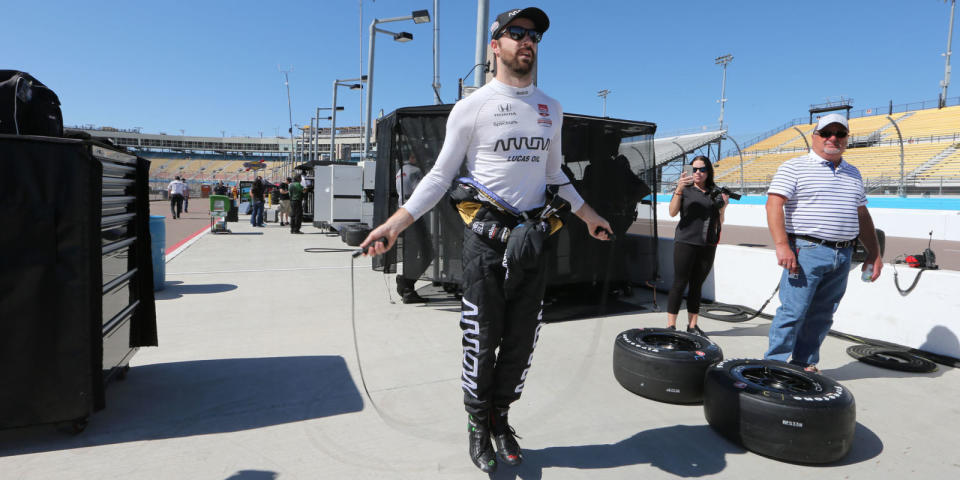How IndyCar Drivers Prepare to Drive a Race Car

For most IndyCar drivers, it's a long stretch. The kind you see from dancers. Leg fully extended, propped up on a wall, torso folded forward to release the muscle tension in the hamstrings.
For others it's a dance. A fighter's dance. Shadowboxing, jumping up and down, twisting at the waist, swinging their torso back and forth like pugilistic aerobics.
The unenlightened suggest racecar drivers aren't athletes, but for those who understand the rigors involved with driving for hours at over 200 mph in the Indy 500, fighting the kind of g forces that fighter pilots face, and applying sustained steering and braking leverage that would exhaust a bodybuilder, there's no question racers are finely tuned performers just like the machines they drive.

"I do the jumping and boxing to get my heart going," said three-time Indy 500 winner Helio Castroneves. "That's my way of turning everything up [physically] before I have to push myself in the car."
For a lanky driver like Graham Rahal, it's the full stretch. For James Hinchcliffe, it's jumping rope before climbing into his car and facing extreme speed.
"Take that pulse rate up so you're close to where you'll be when you hit the track," he said.

IndyCar drivers tend to operate in the cockpit with their hearts pumping like machine-gun fire. 160-190 BPM is common, and that's while using laser-like focus to drive, race, and jockey for position with 20 or more cars in the general vicinity.
It all starts with the same practice a LeBron James or Tom Brady uses during pre-game prep. Getting limber, getting a good sweat going. It's the key to star performances in the stick-and-ball world just as it is at the Indy 500.

 Yahoo Autos
Yahoo Autos 